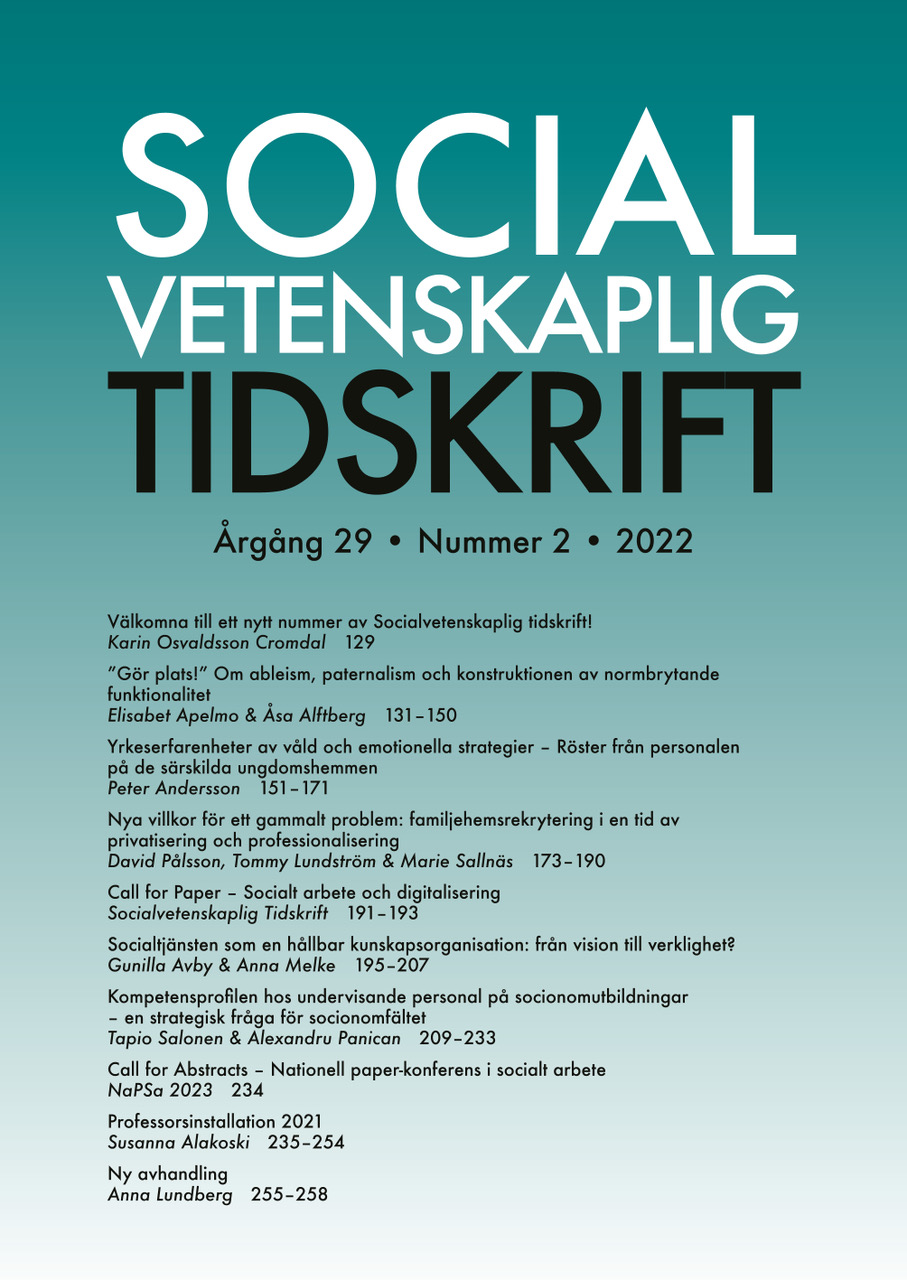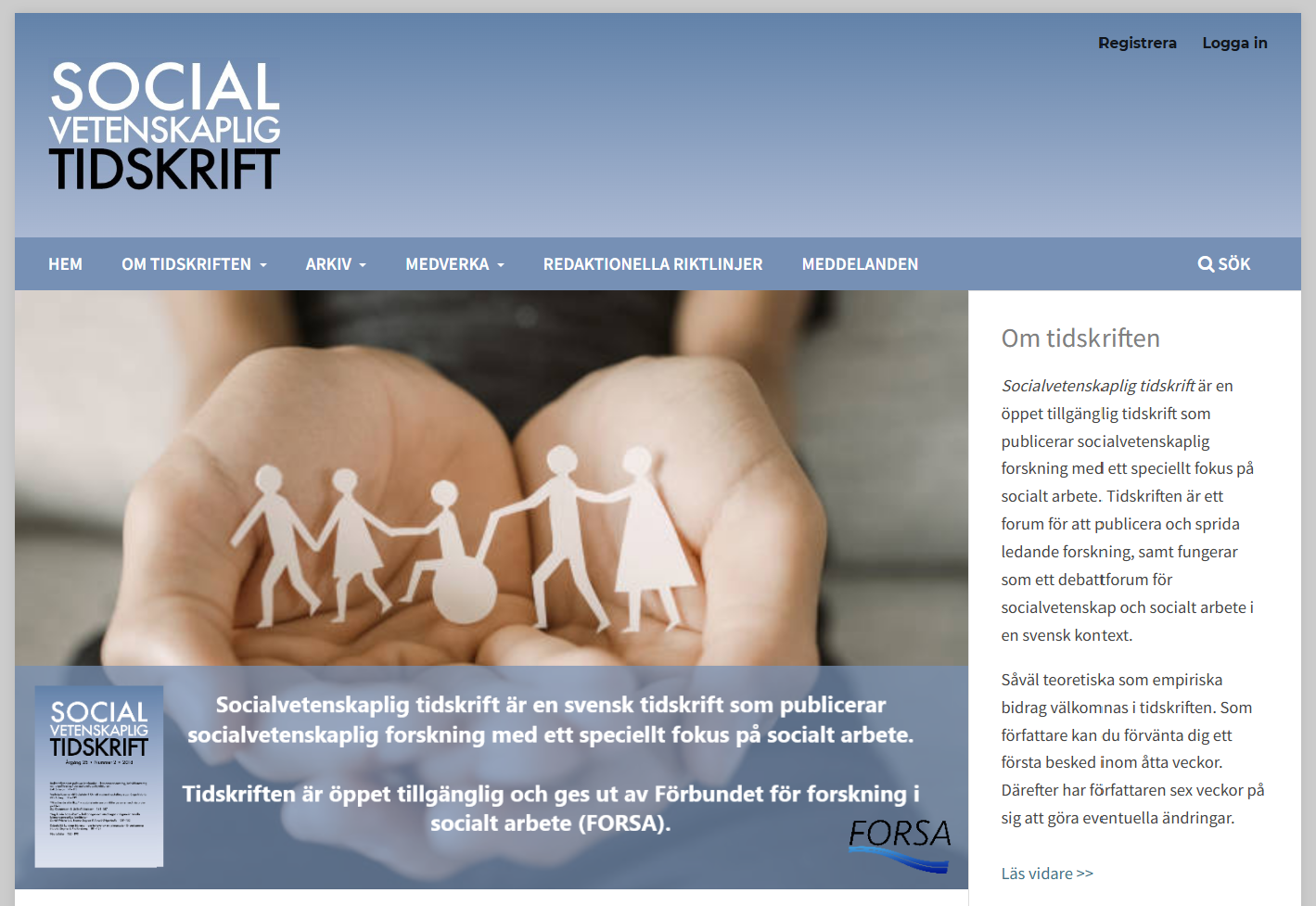Nya villkor för ett gammalt problem
Familjehemsrekrytering i en tid av privatisering och professionalisering
DOI:
https://doi.org/10.3384/SVT.2022.29.2.4612Abstract
New conditions for an old problem: foster care recruitment in an era of privatisation and professionalisation
Foster care is the most common intervention for children who are placed in out-of-home care. At the same time, there are recurrent discussions about difficulties in recruiting foster homes. The preconditions for recruitment have changed and today, there is an increased competition for foster homes between municipalities and private businesses, stricter requirements placed on foster parents and changes in the needs of children placed in care. The aim of the article is to analyse the recruitment of foster homes in light of these changed preconditions. Empirically, the article is based on a survey targeting Swedish municipalities. The findings show, that although a majority of the municipalities have employees particularly responsible for recruitment, small municipalities often lack such resources. Further on, almost three quarters of the municipalities state that it is difficult or very difficult to recruit foster homes. For example, answers to the survey’s open questions demonstrate that competition from other municipalities and private companies affects recruitment. Further on, the municipality’s reputation is considered an important factor for attracting new foster homes. Finally, it appears to be difficult for municipalities to recruit a varied supply of foster homes and, in particular, homes that can care for children with special needs. The findings are discussed in relation to previous international and Swedish research. Finally, suggestions regarding how recruitment may be improved are presented.
Downloads
Publicerad
Referera så här
Nummer
Sektion
Licens
Copyright (c) 2023 David Pålsson, Tommy Lundström, Marie Sallnäs

Det här verket är licensierat under en Creative Commons Erkännande 4.0 Internationell-licens.
Allt material i Socialvetenskaplig tidskrift publiceras sedan 2022 (Vol 28 Nr 2) med omedelbar öppen tillgång (open access), under Creative Commons-licensen CC BY 4.0. Upphovsrätten till innehållet tillhör respektive författare.
Allt innehåll i tidskriften är fritt tillgängligt utan kostnad och får fritt läsas, laddas ned, kopieras, delas, skrivas ut och länkas. När innehållet används måste författare, källa och licens anges. Författaren kan fritt göra sin publicerade text tillgänglig på institutionella och internetbaserade arkiv, exempelvis sitt lärosätes digitala arkiv eller andra tjänster för detta.
Inga publiceringsavgifter tas ut vid publicering i Socialvetenskaplig tidskrift.


